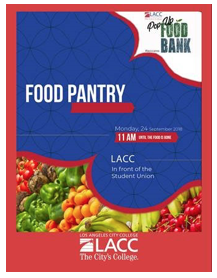CommentsPLANNING WATCH-In the United States one of seven adults goes to bed hungry, and the plight of children is even worse; one in five do not get enough to eat! In Los Angeles, the Regional Food Bank reports that 2,000,000 Los Angeles County residents are food deprived.
This amounts to 20 percent of the population, and the Regional Food Bank also notes “Hunger affects all groups of people regardless of education level, employment status, or ethnicity.”
In response, in addition to an extensive network of local food banks, the Department of Agriculture (USDA) operates the SNAP program (Supplemental Nutrition Assistance Program), usually referred to as food stamps. Each month, SNAP and other USDA food programs feed 40,000,000 people. These popular USDA programs hearken back to the depression-era New Deal, when President Franklin Roosevelt’s (FDR) acknowledged the extent of poverty in the United States through his famous 1936 inaugural speech: “I see one-third of a nation ill-housed, ill-clad, and ill-housed.” Eighty-three (83) years later, FDR’s words still ring true, despite decades of bipartisan pushback against New Deal policies and programs.
This response to widespread hunger in the United States sharply contrasts to those who still live in over-crowded and rent-gouged apartments, or sleep on couches, sidewalks, cars, and tents. This homeless population now totals 550,000 Americans, including 36,000 Angelenos.
 While food banks and the USDA’s food assistance programs have extensive public support, the same approach does not apply to the housing crisis. Unlike Franklin Roosevelt, most public officials treat these twin crises differently, with tacit public support, especially from those whose endorphins spike every time they blame a victim for homelessness on social media.
While food banks and the USDA’s food assistance programs have extensive public support, the same approach does not apply to the housing crisis. Unlike Franklin Roosevelt, most public officials treat these twin crises differently, with tacit public support, especially from those whose endorphins spike every time they blame a victim for homelessness on social media.
Although explanations for pressing social problems, like homelessness, that shield decision makers, no longer surprise me, I have yet to hear the same blame-the-victim explanations applied to the hunger crisis.
Is it just a matter of time until we hear the following?
- To feed the 2,000,000 LA County residents who go to bed hungry, the City of Los Angeles must quickly approve more Whole Foods and Bristol Farms grocery stores. To increase the supply and reduce the price of food, the City should foster the construction of these specialty supermarkets.
This solution is obviously ridiculous since, per Leonard Cohen, everybody knows that unsold gourmet food at these expensive emporiums will never be marked down to the price point that the hungry can afford it. Nevertheless, this is the same argument that the California State legislature raised when it recently adopted Senate Bill 330 and continued Senate Bill 50.The latter housing legislation, authored by YIMBY California and sponsored by real estate industry loyalist State Senator Scott Wiener, is entirely based on supply-side economics. Its supporters actually believe that more luxury housing will miraculously trickle down to eliminate homeless. Furthermore, this is the same hocus-pocus offered by LA’s City Hall and its Abundant Housing associates when they embrace local real estate scams, such as Transit Neighborhood Plans (TNPs).
- We should close food banks and USDA food programs because they only coddle the hungry. These millions of hungry people should assume personal responsibility to feed themselves and not depend on the nanny state to meet their basic human needs.
- Anyone who is hungry in the United States only has himself or herself to blame. We live in such an abundant society that obesity is steadily increasing and 30 to 40 percent of our food ends up dumpsters. Ironically, these farcical claims are applied daily to the homeless, even though Los Angeles has 100,000 vacant residential units, or three empty residences for each homeless person. Just like hunger crisis, the U.S. does not have a housing supply problem. What it lacks is a way to make empty housing and uneaten food accessible to those who remain ill-housed and ill-fed.
- People who are hungry like being hungry. This is their chosen lifestyle, and there is no point offering them supplemental food because they won’t even eat it. It will go to waste, so why even bother?

This wheelchair-bound woman did not get the memo that she likes to be hungry.
- Hunger results from drug addiction and mental illness, not high rents, low wages, and poverty, so there is no point in giving people food aid. They either won’t appreciate it or do not deserve it. Absurd? Yes. Widely believed? Also yes, even though the low-information Angelenos who recycle these drug addiction claims never cite any evidence, or a reason why those afflicted by drug addiction and mental illness do not need shelter or food.
- If local food banks offer people free food, they will move to LA from other states to get these handouts. To keep them away, we should shut down the food banks. (Don’t laugh because I know someone who was relentlessly hounded on the NextDoor electronic bulletin board because she gave food and clothing to homeless people in her neighborhood.)
- To push the hungry to other neighborhoods, we must make their lives miserable. We should call the cops on them, and if that doesn’t work, turn on sprinklers, burn their possessions, and finally douse them with battery acid, bleach, and gasoline.
Why do these all too-common claims to justify homelessness and oppose individuals and groups helping the homeless gain traction, while the same exact arguments, when applied to the hungry, are dismissed as preposterous?
It not just that the homeless are more visible than the hungry. They are also an inevitable outcome of long-term cutbacks in government mental health and social service programs, as well as the elimination of affordable and low-income public housing programs. At the same time public officials have become dependent of campaign contributions from well-healed real estate donors. As the real estate sector’s wealth has grown to 60 percent of all assets, so has their political clout and willingness to use it to maintain their business model: real estate speculation in major cities to accumulate immense profits.
As suggested by Brian Hennigan in Jacobin Magazine, this business model creates homelessness faster than government agencies and non-profits can sweep it out of view. As a result, major real estate investors face a dilemma because nearby homeless encampments deter potential buyers and renters. To reduce homelessness, they could forego investments in highly profitable urban real estate projects, but this would cut into their bottom line. Or, they could generously fund quasi-public housing through employee and inclusionary housing programs, but this, too, would reduce their profits.
Their third option is to use the corporate media to stigmatize the homeless and local government to push them to other areas through police and Bureau of Sanitation sweeps. This approach hopes to placate the liberals with a few symbolic programs, like Measures JJJ and HHH in LA and win over the neo-liberals and conservatives with tall tales about trickle down housing. As for the Fox News crowd, they are served large portions of blame-the-victim baloney, which they quickly digest and spread through social media.
Can our local officials really square this circle? Can they simultaneously serve the needs of their real estate donors, placate the liberals, cut deals with the conservatives, and feed red meat to the drive-the-homeless-out-of-town crowd? The steady increase of homelessness, the emergence of homeless encampments throughout Los Angeles, the likelihood of a housing market collapse, and the preparation of detailed public housing programs by some Presidential candidates suggests no.
This circle cannot be squared much longer.
(Dick Platkin is a former Los Angeles city planner who reports on local planning issues for CityWatch. He serves on the board of United Neighborhoods of Los Angeles (UN4LA) and welcomes comments and corrections at [email protected]. Selected previous columns are available at the CityWatch archives and the Plan-it Los Angeles blog.) Prepped for CityWatch by Linda Abrams.















